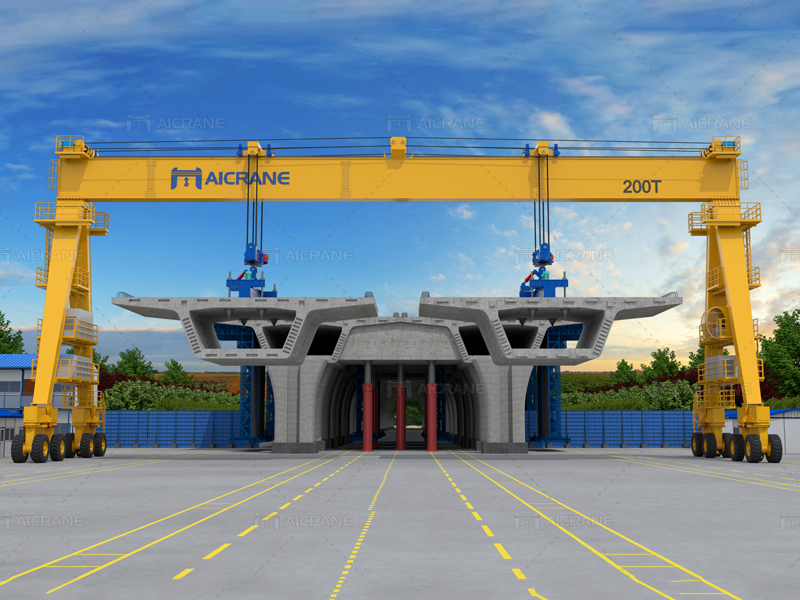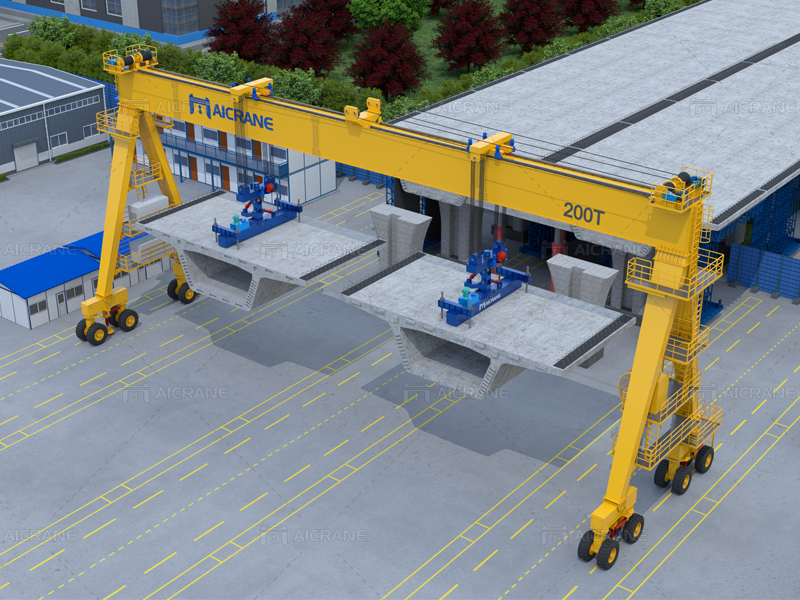Straddle carriers play a crucial role in the efficient and seamless movement of containers in ports and terminals. These specialized vehicles are designed to lift and transport containers, providing a versatile and cost-effective solution for handling cargo. To understand the intricacies of a straddle carrier system, it’s essential to delve into its key components that collectively contribute to its functionality and effectiveness.

Frame and Structure:
The foundation of any straddle carrier is its robust frame and structure. Typically constructed from high-strength steel, the frame supports the entire weight of the machine and the containers it carries. The design of the frame is crucial for maintaining stability during lifting and transporting operations. Straddle carriers are engineered to withstand the challenging conditions of port environments, including heavy loads and frequent movements.
Lifting Mechanism:
One of the primary functions of a straddle carrier system is lifting containers from the ground or stacking them on top of each other. The lifting mechanism consists of vertical columns equipped with hydraulic systems. These hydraulic cylinders provide the force needed to raise and lower the spreader, which holds the containers securely during transportation. The lifting mechanism is a critical component that determines the straddle carrier’s lifting capacity and operational efficiency.
Spreader:
The spreader is an essential attachment at the end of the straddle carrier’s lifting mechanism. It is responsible for grasping and securing containers during loading, unloading, and transportation. Spreaders come in various configurations to accommodate different container sizes and types, including standard twenty-foot and forty-foot containers, as well as specialized containers like reefers. The spreader’s design and functionality significantly impact the straddle carrier’s ability to handle diverse cargo efficiently.
Power System:
The power system of a straddle carrier includes the engine, transmission, and other components that generate and transmit power to drive the machine. Most modern straddle carriers are equipped with diesel engines for their ability to provide high torque and power, essential for lifting heavy containers. However, some models may feature alternative power sources, such as electric or hybrid systems, aligning with the industry’s growing emphasis on sustainability.
Control System:
The control system is the brain of the straddle carrier, managing various operations and ensuring precise movements. Advanced computer systems and controllers govern functions like lifting, lowering, steering, and braking. The integration of intelligent control systems enhances the straddle carrier’s operational accuracy, safety, and adaptability to different tasks. Additionally, some models may incorporate automation and remote control capabilities, contributing to improved efficiency and reduced manpower requirements.

Steering and Drive System:
Maneuverability is a key consideration in port operations, and the steering and drive system plays a crucial role in achieving this. Straddle carriers feature multiple wheels that can be steered independently, allowing them to turn within tight spaces. The drive system provides the necessary power to propel the straddle crane in different directions. The combination of a responsive steering system and a robust drive system enables precise positioning of containers and efficient navigation in congested port areas.
Tires and Suspension:
The tires and suspension system of a straddle carrier are designed to withstand the heavy loads and uneven terrain encountered in port environments. Solid rubber tires provide stability and durability, while the suspension system minimizes vibrations and shocks, ensuring smooth operations. The combination of robust tires and an effective suspension system contributes to the straddle carrier’s ability to traverse various surfaces, including docks, storage yards, and container stacking areas.
Safety Features:
Safety is paramount in port operations, and straddle carriers are equipped with various safety features to protect both operators and the surrounding environment. These features may include cameras and sensors for improved visibility, alarms to signal potential hazards, and fail-safe mechanisms to prevent accidents during critical operations. The integration of advanced safety technologies enhances the overall reliability and trustworthiness of straddle carrier systems.
Conclusion:
In conclusion, a straddle carrier system comprises a sophisticated combination of components that work together seamlessly to handle the intricate task of lifting, transporting, and stacking containers in port and terminal operations. From the robust frame to the intelligent control systems, each component plays a vital role in ensuring the efficiency, safety, and adaptability of straddle carriers in the dynamic world of maritime logistics. As technology continues to evolve, we can expect further advancements in straddle carrier systems, contributing to increased automation, sustainability, and overall operational excellence in the global shipping industry. For more info, click here https://steelmillcranes.com/